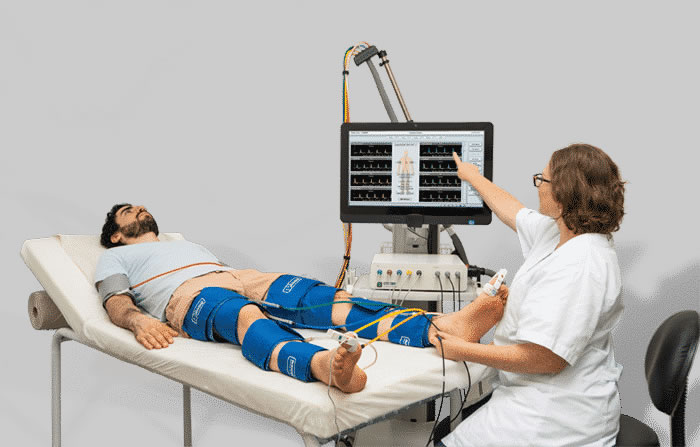
Cardiovascular diseases are on the rise, posing a significant threat to our well-being. The key to tackling these diseases lies in early detection and prevention. At Cardiovascular Specialists, we proudly offer a wide selection of diagnostic services to help our patients achieve lasting health. One valuable diagnostic tool that plays an important role in assessing vascular health is the Achial Brachial Index. Read below to better understand the details of ABI, and determine if this test is right for you.
Peripheral artery disease is a prevalent condition that affects blood flow to the limbs, leading to pain, numbness, and reduced mobility. ABI plays a vital role in its early detection. By measuring the ABI, healthcare professionals can identify individuals at risk of PAD and intervene quickly. It also serves as an essential tool in assessing the effectiveness of interventions and treatments for vascular diseases, allowing healthcare providers to monitor the progress of the condition and adjust the treatment plan accordingly.

The Achial Brachial Index is a non-invasive diagnostic test used to evaluate blood flow and identify vascular abnormalities. It provides valuable insights into arterial health, circulation, and the presence of any blockages or narrowing in the arteries. The measurement of ABI is a relatively straightforward and non-invasive procedure. It involves using a blood pressure cuff and a Doppler ultrasound device. The process typically consists of the following steps:
The interpretation of ABI results is essential for understanding the state of vascular health. Typically, an ABI value between 0.91 and 1.30 is considered normal. Values higher than 1.30 may indicate arterial stiffness or calcification, while values lower than 0.91 suggest arterial blockages or narrowing. Higher ABI values could be due to conditions such as diabetes, kidney disease, or the presence of non-occlusive diseases. Conversely, lower ABI values indicate poor blood flow, often associated with peripheral artery disease or other vascular conditions.

ABI has numerous clinical applications beyond PAD diagnosis. It serves as an effective tool in monitoring the progression of peripheral artery disease and assessing the success of interventions, such as lifestyle changes, medications, or surgical procedures. ABI measurements can help healthcare providers determine the efficacy of treatments and make informed decisions regarding further interventions.
Taking care of our vascular health is essential for leading a healthy and active life. If you experience symptoms related to poor circulation or have risk factors for cardiovascular diseases, call the team at Cardiovascular Specialists today. Our professionals can provide guidance based on your unique situation. Contact our office for more information or to schedule a convenient appointment.